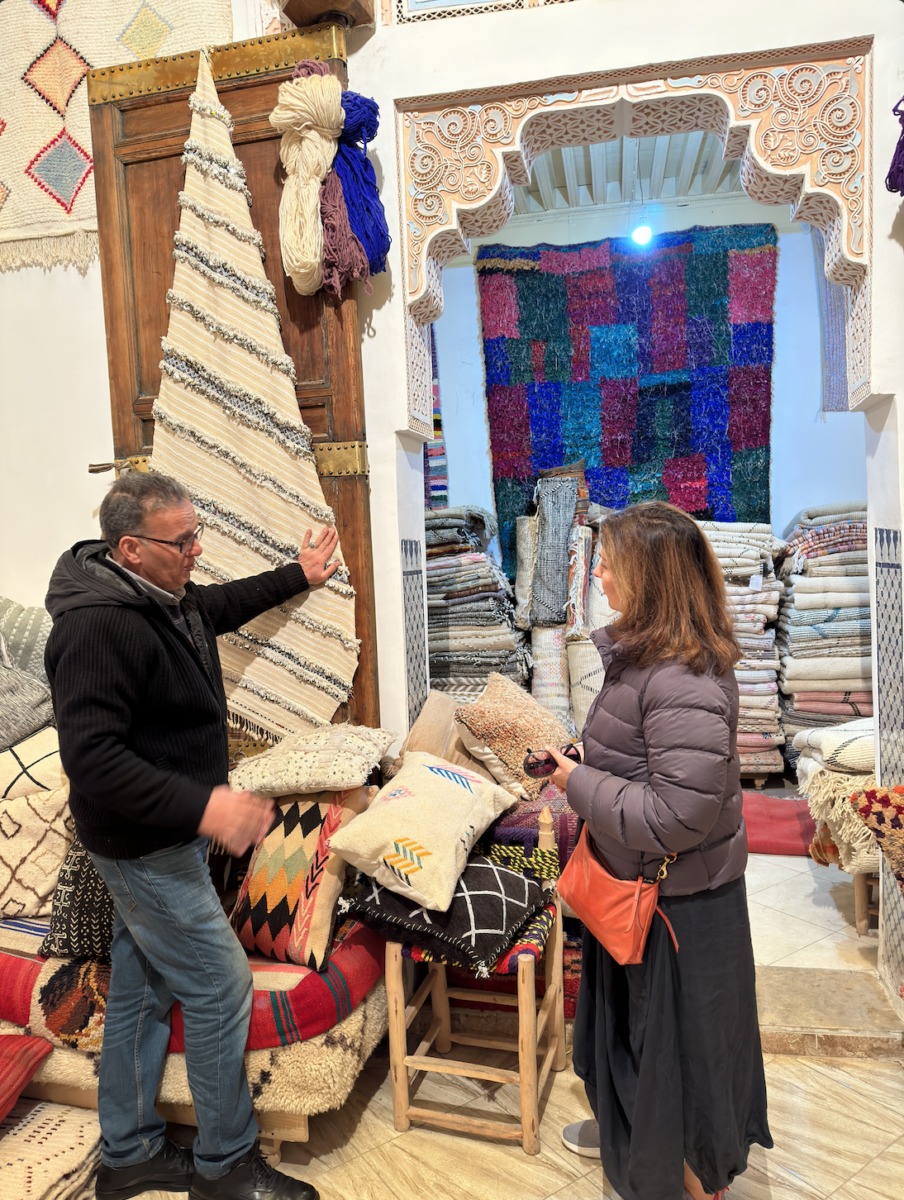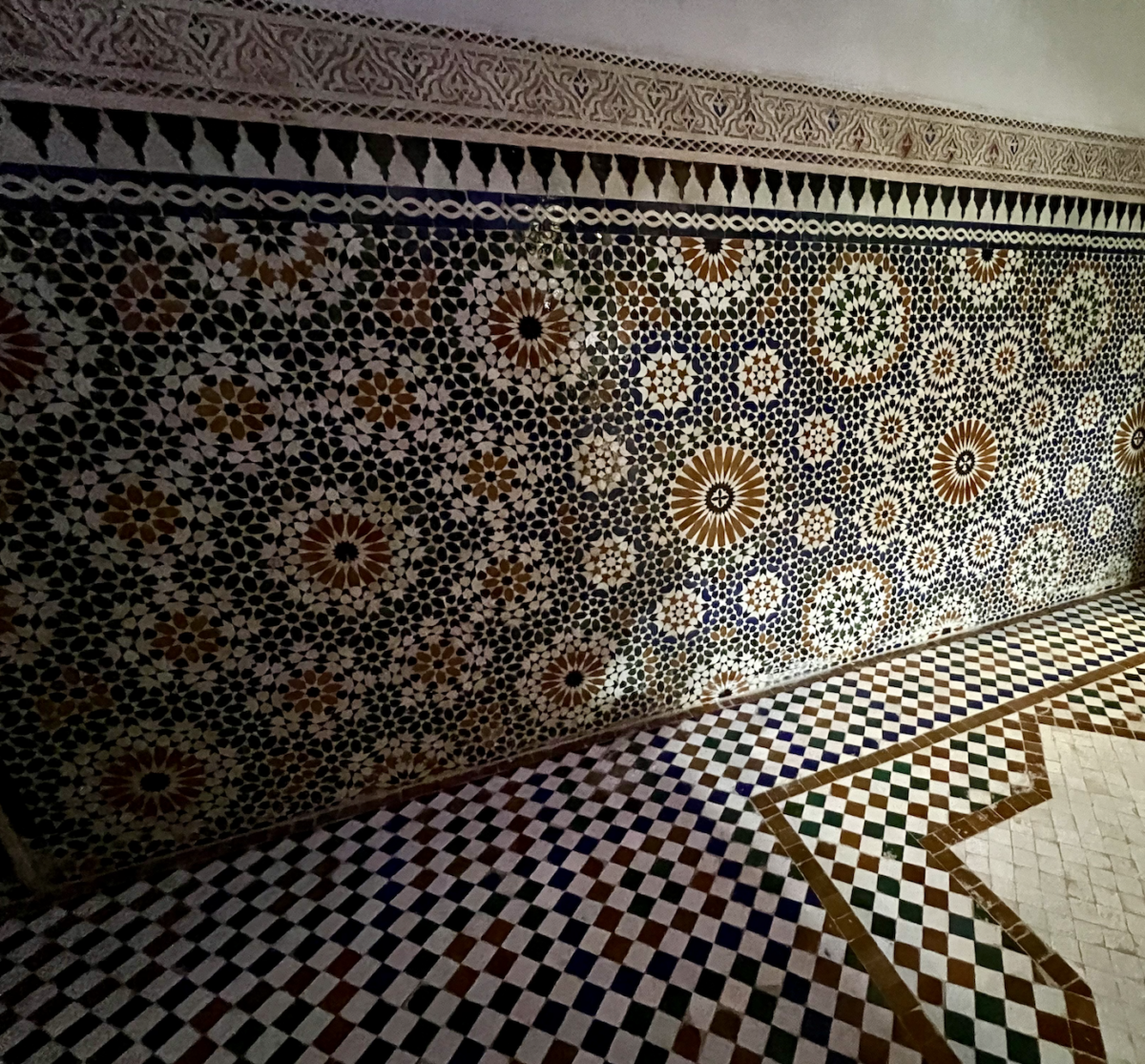Everything everywhere all at once in design-rich Morocco

I love to travel, as it gives you the chance to experience new cultures and meet new people. It really sparks creativity.
I just came back from a trip to Morocco where I had a sense of having stepped back in time and of a modern country innovating, building and looking forward. We traveled to Fes, Rabat, Marrakesh and into the Atlas Mountains. Each area has its own distinctive
vibe to it. My first thought was how long these ancient cities and peoples have been there. They have gone through harsh living conditions in the deserts, fighting and invasions and now live in relative peace with other cultures. Everywhere you look there are influences of the Berbers (the pre-Arab peoples of North Africa), Romans, French and English ”“ sometimes all at once. In several antique shops we visited, you could find ancient swords and daggers next to rugs and Berber women”™s handmade jewelry along with porcelain and glass from England and France.
There is both the modern Morocco, then, which wants to be energy-independent by 2050, with solar panels being constructed everywhere; and the time-honored ancient craftsmanship that is passed down from family to family. Our first stop was a pottery/ tile factory. There artisans were creating zellige tiles in an array of beautiful colors and then hand-cutting the tiles into shapes to create the intricate tile patterns that Morocco is known for. The sheer amount of tile used is incredible and the patterns themselves are patterns that have been handed down for generations.

There were also some newer designs and colors being used in some of the buildings. What was so interesting was the combinations of patterns used in one home, or riad, for floors, walls, doors and archways. Riads are constructed around central courtyards and have been in the same families for generations, often with three generations living in one riad alone.
We traveled through the winding, narrow medinas ”“ the old parts of Morocco”™s cities ”“ dodging bicycles, electric bikes, scooters and small motorcycles. The alleys of the medinas are so narrow that there is no way to get a car or truck through them. They were constructed purposely to be narrow to avoid a neighboring tribe from taking over the city in ancient times. Most cities and villages were also constructed with large walls surrounding them to keep invaders out. Donkeys still carry the burden of getting construction materials through the enclosed, serpentine medinas.
Yes, we were dodging donkeys, too ”“ all in pursuit of the ancient art of rug making, which is alive and well in Morocco. Indeed, we went to several rug shops to look at their wares (and, of course, purchased a few).
The rug designs and clothing are specific to different tribes. It was so much fun to see these rugs laid out and to learn about them. I visited one shop in which a Berber woman showed me the technique of making a rug by hand. Weaving rugs on a loom and hand-knotting them in patterns are time-consuming processes that nonetheless yield beautiful results. Having tea with a Berber family in their home in the Atlas Mountains made me realize that the rugs were not purely decorative; they were a necessity. Some homes in the mountains do not have heat and these rugs are utilitarian.
The entire floor of the one-room home was covered in layered rugs along with some being made into cushions for seating. Berbers were and are nomadic, so their vintage rugs are often small in size to be carried easily by camel or donkey.
We also visited what is the equivalent of a farmers”™ market. We went to one at the base of the Atlas Mountains, in which members of the Berber tribes come down from the mountains to shop for what they need, be it vegetables, meat, clothing, rugs or shoes. The market is mostly filled with men in traditional clothing.
Morocco was a fantastic place to visit. The people are warm, open and curious. They are proud of their country and thrilled about progressing into the next centuries, while still seeming to manage to keep their customs and traditions alive. The layering of colors, rugs, textiles and designs has definitely opened up new areas of continued creativity in my work for clients.
For more, contact Cami at 914-447-6904 or at Cami@camidesigns.com.